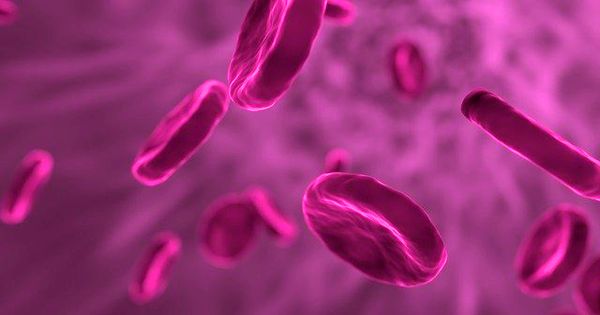Scientists developed an Ultra-sensitive nano-sensor to detect iron disorders
Nanosensors are any sensor used to convey information about nanoparticles to the macroscopic world. Their use mainly includes clinical medicine or as tools for other nanoproducts, such as semiconductor chips or nanoscale machines. Scientists have developed a hypersensitive nano-sensor to detect harmful ‘free’ iron disorders. The test could lead to earlier, more accurate disease diagnosis.
Iron is the most abundant transition metal in cellular systems holding outstanding biological importance because of its presence in the structures of numerous enzymes and proteins. Chronic iron imbalances — having either too little or too much iron in the blood — can result in medical conditions ranging from anaemia and hemochromatosis to more severe diseases, such as cancer, Parkinson’s Disease, and Alzheimer’s Disease.
Hemochromatosis is one of Australia’s most common hereditary diseases and the Australian Bureau of Statistics estimates approximately 780,000 people live with anaemia
The University of Sydney’s Tissue Engineering and Biomaterials Research Unit and the Australian Research Centre for Innovative BioEngineering have developed a hypersensitive nano-sensor to detect harmful ‘free’ iron disorders.
School of Biomedical Engineering Ph.D. candidate and Sydney Nano Institute student ambassador, Pooria Lesani, who is undertaking his studies under the supervision of Professor Hala Zreiqat and Dr. Zufu Lu, has developed a multipurpose nanoscale bio-probe that allows researchers to precisely monitor iron disorders in cells, tissue, and body fluids as small as 1/1000th of a millimolar.
The test is more sensitive and specific than blood testing currently used to detect iron disorders, which begin at very low, cellular level concentrations.
Using novel carbon-based fluorescent bio-nanoprobe technology, the test, which involves non-invasive subcutaneous or intravenous injections, allows for a more accurate disease diagnosis before the onset of symptoms, potentially allowing for the early treatment and prevention of more serious diseases.
“More than 30% of the world’s population lives with an iron imbalance, which over time can lead to certain forms of cancer, as well Parkinson’s Disease and Alzheimer’s Disease,” said Mr. Lesani from the Tissue Engineering and Biomaterials Research Unit and the ARC Centre for Innovative BioEngineering.
“Current testing methods can be complex and time-consuming. To counter this, and to enable the early detection of serious diseases, we have developed a hyper-sensitive and cost-efficient skin testing technique for detecting iron in the body’s cells and tissue.
“Our most recent testing demonstrated a rapid detection of free iron ions with remarkably high sensitivity. Iron could be detected at concentrations in the parts per billion range, a rate ten times smaller than previous nano-probes.
“Our sensor is multifunctional and could be applied to deep-tissue imaging, involving a small probe that can visualize the structure of complex biological tissues and synthetic scaffolds.”
Tested on pig skin, the nanoprobe outperformed current techniques for deep tissue imaging, and rapidly penetrated biological tissue to depths of 280 micrometers, and remained detectable at depths of up to 3 millimeters – in synthetic tissue.
The team aims to test the nanoprobe in larger animal models, as well as investigating if it can be integrated into a “lab-on-a-chip” sensing system – a portable, diagnostic blood testing tool that could allow clinicians to remotely monitor their patients’ health. The nano-sensors can also be made from agricultural and petrochemical waste products, allowing for low-cost, sustainable manufacturing.
















